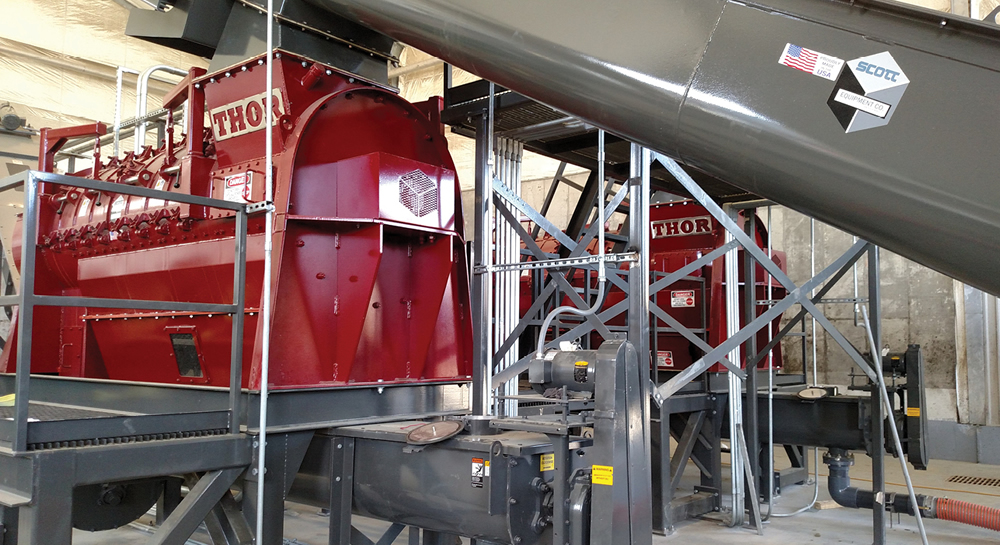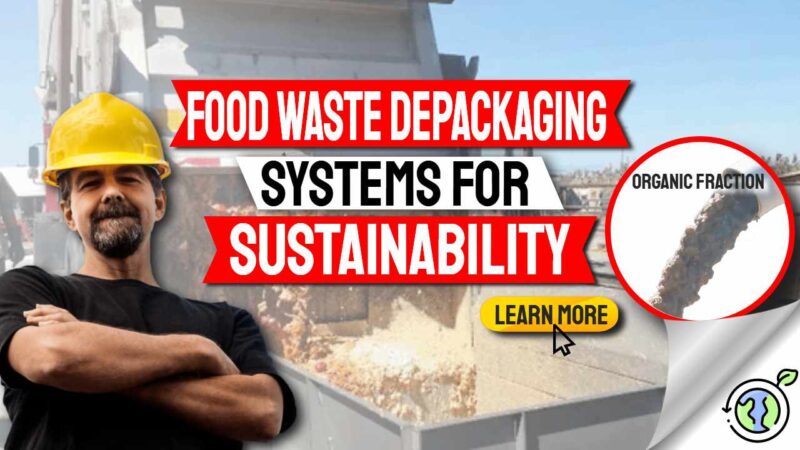Packaged food waste - no problem
by Admin
Posted on 29-07-2022 11:36 PM

Food
waste
is an expensive commodity, and the pressure to recycle more sits firmly with the business creating or managing it. Packaged food waste is often so problematic that businesses simply consign it to landfill. The solution is the i-fdr depackaging system which separates the packaging from the food with no need for staff to segregate it. So packaged food producers and retailers can benefit from everything the id-r systems offer; cost savings and even possible revenue opportunities. Scroll down now to find out more about this fantastic add-on.
 By employing depackaging as part of an integrated food waste management solutions , our i-fdr depackaging system, can separate food waste from packaging.
By employing depackaging as part of an integrated food waste management solutions , our i-fdr depackaging system, can separate food waste from packaging.
Contaminant is an oft-hurled epithet at food waste composting and anaerobic digestion facilities, reflecting processors’ frustrations at having to clean up the incoming organics stream to minimize equipment downtime, and preserve product quality and price points. Food products come packaged in an almost infinite variety of materials, shapes, weights, and densities. Almost all packaging is a contaminant, including (in some views) the astm-compliant compostable plastics that are beginning to capture market share. Packaging varies from the expanded polystyrene foam used to make the small sandwich tray to the flexible package pouch containing a juice drink to the ubiquitous film plastic used to cover and carry it all.
The twister de-packager and separator is based on drycake’s third generation of its vertical cyclonic separation technology. Intended to produce a suitable depackaged food waste substrate for ad plants, there is one installation in the u. S. And seven worldwide. The u. S. Installation at north state rendering was covered in a biocycle article (goldstein, 2019). Twister depackager the twister operates on the principle of a separation vortex. The system consists of a feed hopper with an upper screw auger to prevent bridging and a lower screw auger to feed the machine. The hopper also includes a patented debagger, so no prior size reduction is required.
Primarily this is packaged food waste from a variety of sources including industrial and commercial streams, such as restaurants, food producers and supermarkets but also household streams where food waste is collected by the kerbside.
Min output rate/24 hours
Advances in automated food waste depackaging systems, waste separators, and improved sorting technologies can now provide outstanding purity in plastics recycling. Plastic reprocessors are increasingly depending on creative new technologies such as vortex separation, which eliminates human sorting, to increase recycling rates and output quality. Food waste depackaging systems are increasingly rising to the challenge of low-cost, low-carbon-footprint plastics recycling for plastic reprocessors, providing purity and yield dependability at a level where the plastic polymers may be reused in food packaging. The top depackaging processes often remove well over 90% of the plastics.
 According to independent testing, the dry cake twister™ removes 99.
According to independent testing, the dry cake twister™ removes 99.
It can be difficult to keep food products out of landfills, especially because many meals are carefully wrapped. Some pots and punnets are quite little, while others might be quite enormous. A number of food waste depackaging devices employ a hammer and subsequently a screw press to remove the pulp and particles from packaged goods. To pick and sort the incoming objects, every depackaging machine type may use a combination of physical material characteristics in addition to a hammer. A hammermill, for example, can be fed by a counter-rotating dual-auger mixing/feeding hopper and the output (fibres) separated by a horizontal or vertical-pressure screw press.